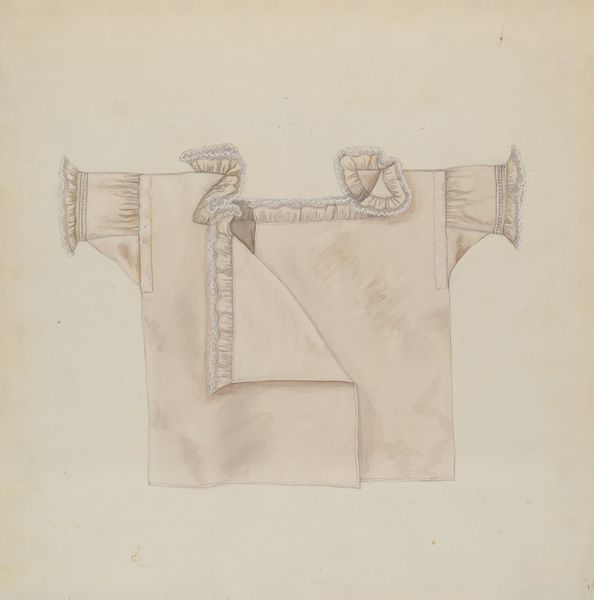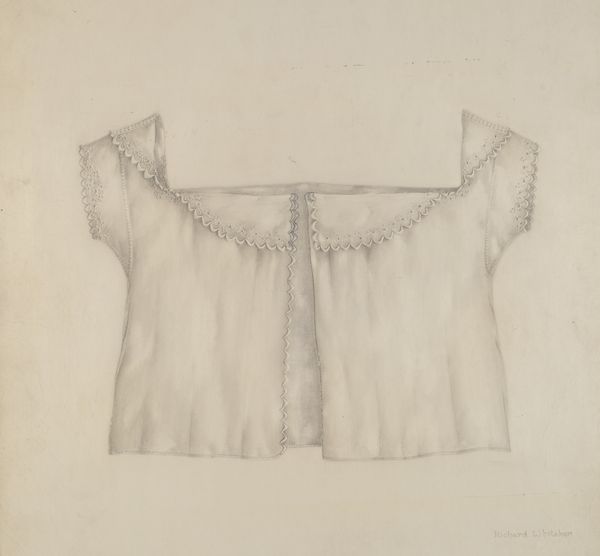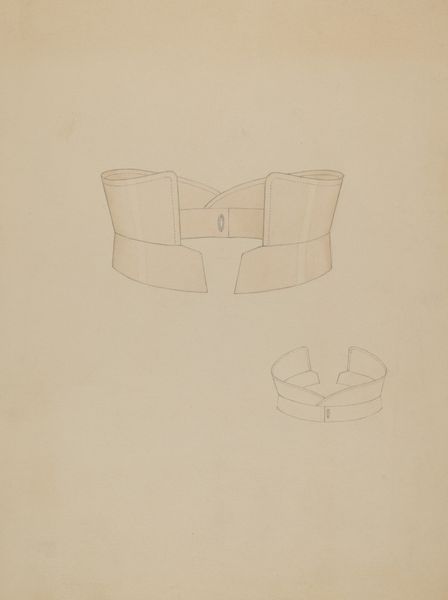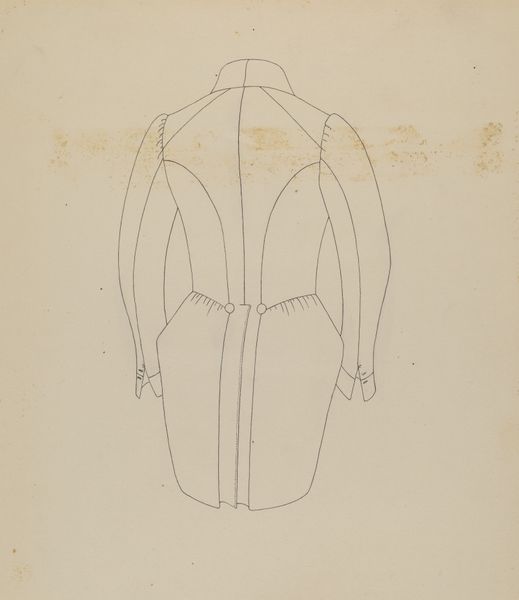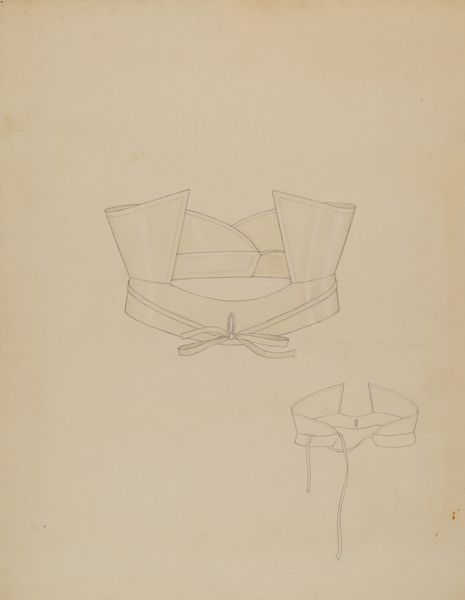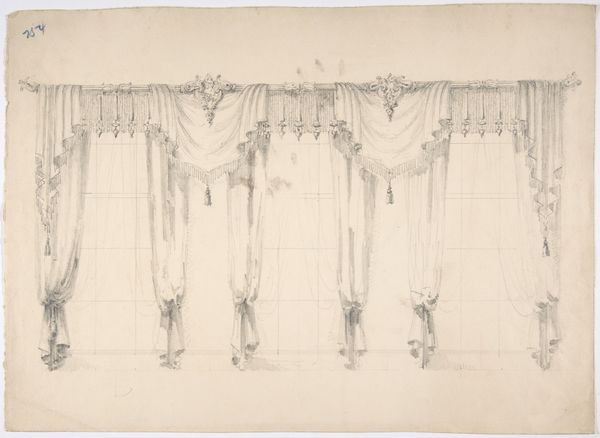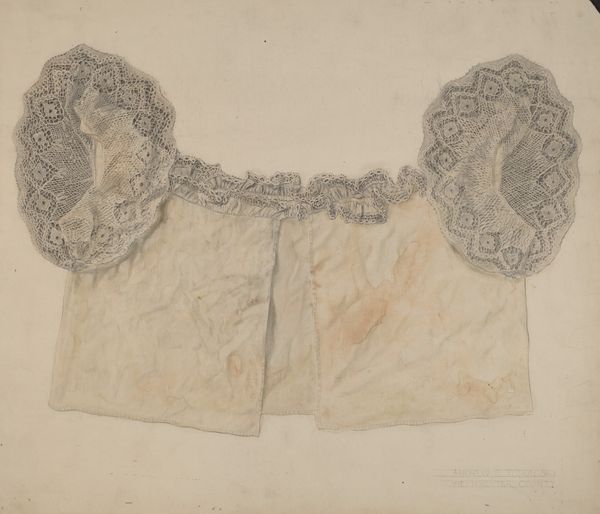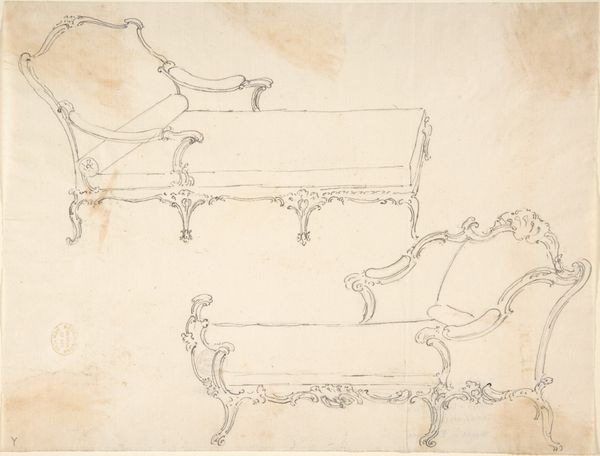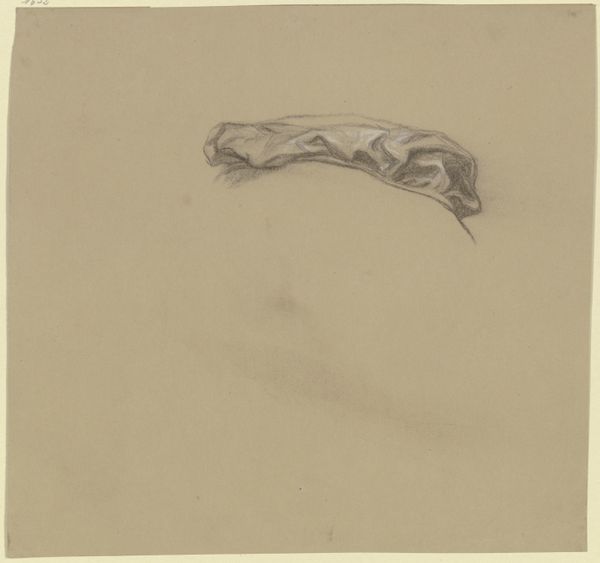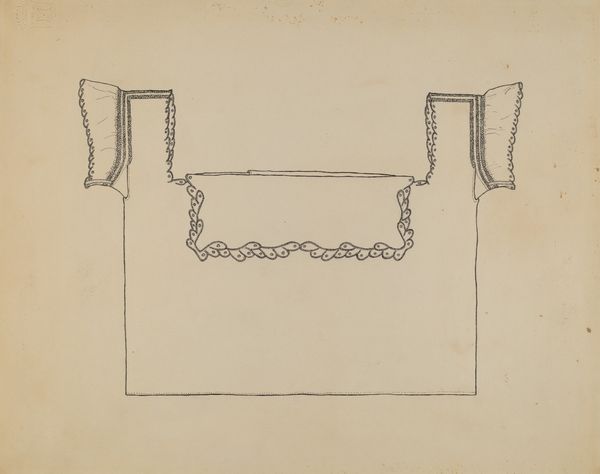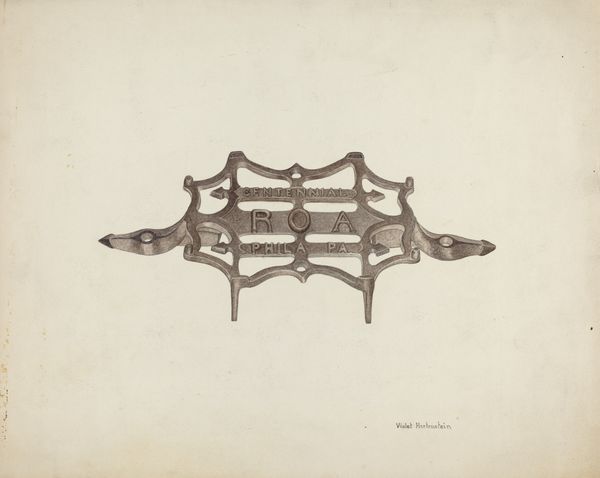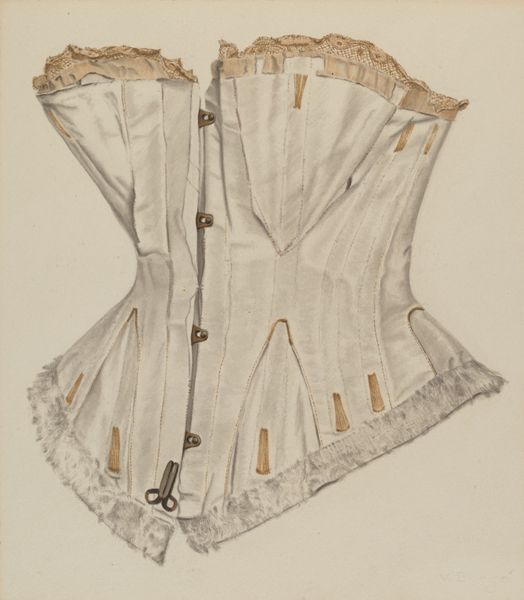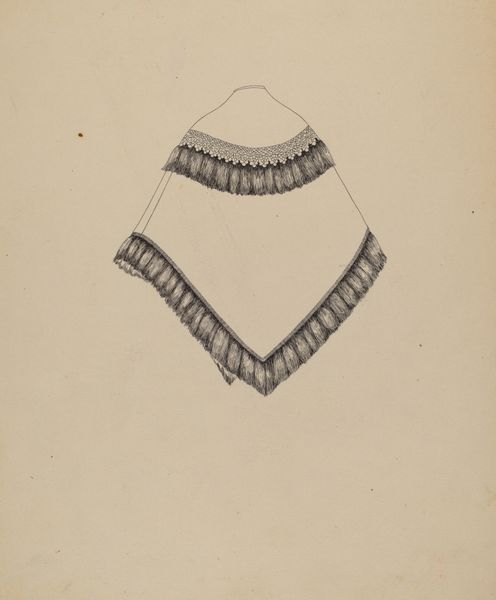
drawing, paper, pencil
#
drawing
#
pencil sketch
#
figuration
#
paper
#
intimism
#
pencil
#
academic-art
#
realism
Dimensions: overall: 32.8 x 27.9 cm (12 15/16 x 11 in.) Original IAD Object: yoke: 12" accross; sleeve: 6" long; 42" long; 40" wide at the bottom
Copyright: National Gallery of Art: CC0 1.0
Editor: This is Gladys C. Parker’s "Chemise," made around 1937 with pencil on paper. It’s a delicate rendering of a nightgown; it seems like an intimate look into domestic life. What's your take on this work? Curator: Absolutely. Given Parker's context as a woman working during that era, I immediately think about the evolving roles of women in society, the subtle act of claiming artistic space for traditionally feminine subjects. Does the work, to you, suggest any sense of the gaze—who is looking, and who is being looked at? Editor: That's an interesting point! I hadn’t considered the idea of the gaze in this context. I suppose it could be seen as a subversion, perhaps giving agency to the wearer through representation? Curator: Precisely. Consider the chemise itself - an item worn in private, now made public through art. Think about how this intersects with larger cultural debates about female identity, modesty, and even comfort in a rapidly changing world. How might this drawing participate in or challenge those norms? Editor: It definitely complicates them, right? On the surface, it's a simple garment, but placing it within a feminist framework gives it so much more weight. The detailed rendering—the folds, the lace— feels almost like an act of celebrating the everyday experience of women. Curator: And celebration through the meticulous observation is key here. It raises questions about the value we place on domesticity, and whether that value is gendered. Editor: It's been really insightful to view something so seemingly simple through the lens of gender and social context. I never would have picked up on those nuances alone. Curator: That’s the beauty of art history—uncovering these hidden dialogues, acknowledging how social structures profoundly influence the creation and interpretation of artworks.
Comments
No comments
Be the first to comment and join the conversation on the ultimate creative platform.
